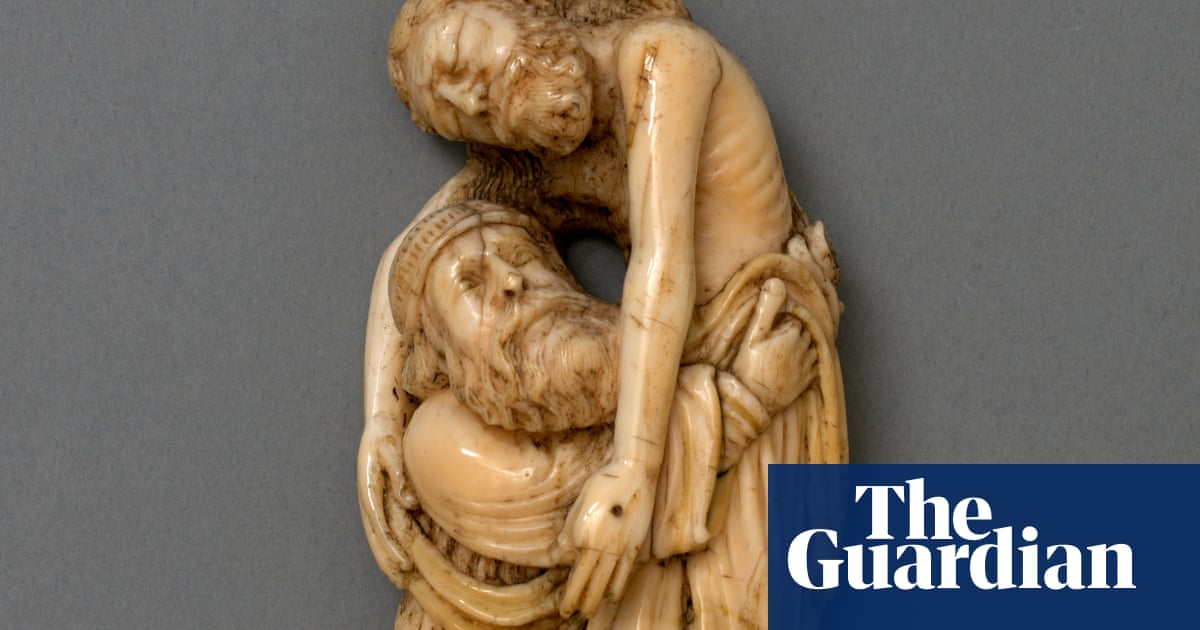A beautiful 12th-century walrus ivory carving regarded as an “elemental object of English art” is to remain in the UK after the V&A successfully raised £2m to acquire it.
The 18cm-high sculpture was probably carved in York more than 800 years ago and shows Joseph of Arimathea tenderly lifting Jesus Christ’s body from the cross.
The carving had, for 40 years (until 2022), been on long-term loan to the V&A in London, but it was sold by its owners to the Metropolitan Museum of Art in New York for about £2m, prompting the UK to place a temporary export bar on it.
The V&A announced in February that it would seek to raise the funds. On Friday it said it had been successful.
Tristram Hunt, the director of the V&A, said the campaign had been vital to save for the nation this “elemental object of English art”. He added: “It is sublime. We often underplay the early medieval period but here you’ve got such delicacy in the carving … you feel the emotion.”
The carving is revered by medieval specialists and regarded as unusually important. Sandy Heslop, a medieval expert at the University of East Anglia, described it to the Art Newspaper as “the first expression of tenderness in a work of art”.
The historian and author Tom Holland said of the carving: “So beautiful, so moving, and all the more precious for being so very rare.”
The object depicts the moment in the story of the Passion of Christ known as the Deposition from the Cross.
The carving is seen as one of the finest and most important examples of English Romanesque ivory still surviving, praised for its embodiment of feelings of human suffering, empathy and compassion.
The piece would have been part of a larger scene and one reason the V&A was so keen to raise the money was that it had the only other surviving piece from the ensemble.
The carving of Judas at the Last Supper was discovered in a house in Wakefield, West Yorkshire, in 1769 and entered the V&A collection in 1949. Acquisition of the deposition fragment means it can go on display with the Judas fragment once more.
Hunt said that because the carving was a loan it had never been given sufficient foregrounding by the V&A. “Now we can, now we can give it the billing it deserves.”
The raised funds include £700,000 from the National Heritage Memorial Fund, a fund of last resort for saving national treasures.
The fund’s chair, Simon Thurley, said he was thrilled the support would “save the sculpture for the nation and secure a home for it at the V&A for audiences to enjoy in perpetuity”. He said it was a “beautiful and expressive” object and “one of the most important English pieces to have survived from the Romanesque period”.
Money had also come from various trusts, foundations and individuals, plus from the Art Fund.
The V&A said the deposition carving ranked alongside two nationally important 12th-century Romanesque objects in its collection: the Gloucester candlestick, regarded as a masterpiece of English metalwork, and the Becket casket, a reliquary enamelled with the murder of St Thomas Becket.
The carving had been in the collection of the art collectors and dealers John and Gertrude Hunt, passing down after their deaths to their heirs.

